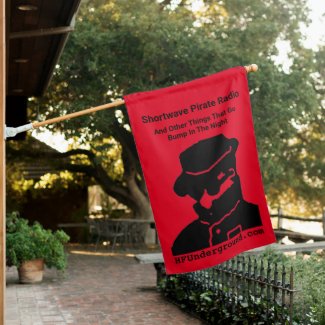We should share our HAM projects to encourage (or enrage) one another! Mr Smolinksi, plz consider making a sub forum in HAM radio for that!
Tother day I saw an advert for a likely rig at The Ham Station, called upon said proprietor, and with a deal being struck, I ventured homeward with a Icom IC-775DSP for a pittance.
The upside is the pittance, the downside is the rig needs a lot of repair and an entire makeover, this thing looks like it was dragged behind Brunson's (AE4N SK) golf cart at a hamfest.
A bit about the 775;
The 775 were the flagship of the Icom HF line back in the day, just after the glorious 781, but before the 756 original flavour.
The 775 brought DSP to the line and oddly enough it was an option, an option unlike the typical add in DSP cards as it was more or less IF DSP rather than AF DSP. What this means is there are two distinct modulation and demodulation paths for the 775 - one provided by the add in DSP card, the other by the onboard analog hardware. My guess is it was one of Icom's most costly rigs ever, as far as parts and design. It will produce some 200w of output power with a 28v pa featuring transistors that are rated at 150w each so I might be tempted to run it at 300w if the waveform's clean.
The 775 also has option slots for multiple xtal filters in the 9 and 455 IF lines, some of wich are already populated by high quality filters.
It's also a huge radio, behold;
https://www.youtube.com/watch?v=TiZxQCv4m04Look at those buttons and knobs!
Come in Tokyo!
HAM nerdvana!
Now about that downside;
The 775 has a known issue with the display backlight cfl circuit where the solder cracks and arcing occurs on the hv secondary xformer, another is it was dropped in transit to a repair shop for the display issue, said repair shop refusing to touch it. It seems most delivery services have instilled a "drop it or you're fired" mentality at their hubs.
Anyway, I'm confident I can overcome the xverter cable connector issues (damaged in shipping) and can have the top and bottom covers bead blasted and powder coated locally, and live with the face if I can't source another, the face is kinda beat up but it's all there. It kinda looks like the HAM only operated the rig when he ate fried chicken, thank god he didn't smoke too.
Project 775
A few years ago I was into the R71 in a big way, with mods and historical notes and everything as it was used by many US gov agencies as well as sigint outfits around the world for many uses, from sigint missions to training. It was often paired with the glorious R7000 to add V/UHF coverage. Even today they're a worthy hf rig.
As I was all about the R71, I came up with some mods and replacements of my own and have parts left over that are perfectly suited for the 775.
One of the mods was to employ the MI204 PIN diode for all input bandpass switching in the front end up to 11MHz, that diode being the one chosen by Icom for use in several hf receiver front ends for VLF to MW. The reason this diode is choice is due the carrier lifetime of said diode, they're simply a much better performer down on the low bands than the typical front end diodes, however they're much more expensive and very hard to find, got mine from Icom years ago. Below about 8MHz these diodes are the cat's ululation, above 8MHz the standard Icom 1SS53 is an outstanding performer even though it's not a PIN diode. The following url has images showing how poorly chosen front end diodes contribute to IMD;
http://jking.000webhostapp.com/TS-940/TS-940_02.htmWhat this should lead you to suspect is I have a lot of crap left over from my R71 rage days.
So I'm contemplating replacing the standard front end diodes with the MI204s I have on hand, and perhaps in the 455 IF switching lines too but those lines see only controlled and tightly bandwidth limited rf.
Another mod is replacing the FL80 2.4KHz ssb filter with a FL70 2.8KHz filter, a direct pin for pin swap. The FL80 is choice when you run the FL44A 455KHz ssb filter as their bandwidth matches, however the 455KHz ssb filter in the 775 is the FL96, a 2.8KHz wide filter. Not only will I enjoy much better audio from the 2.8KHz pair, I can sell the FL80 as it's a sought after premium part and as the 775 was one of the last to use the FL80, the one in the rig is fresher than many of the others found on epay.
Also have a 6KHz wide AM filter that can be spliced into the IF strip for better selectivity on SWBC AM and ECSSB.
There's a lot of possibilities to the rig as it stands, if I can get the core sections up and running. If I can't, there's more than enough filters and the DSP module that will make me a profit over the current outlay if placed on qth or epay. That being said, I'd really like to get it going and modded to my likes, a super R71 of my dreams that can transmit.
nerdstuff;
https://www.robkalmeijer.nl/techniek/electronica/radiotechniek/hambladen/radcom/1995/12/page72/https://en.wikipedia.org/wiki/Carrier_lifetimehttps://www.alldatasheet.com/view.jsp?Searchword=1SS53http://www.arrl.org/files/file/History/History%20of%20QST%20Volume%201%20-%20Technology/QX01-03-Rohde.pdfhttp://www.ab4oj.com/icom/filters/list.htmlhttps://www.hamstation.com/


